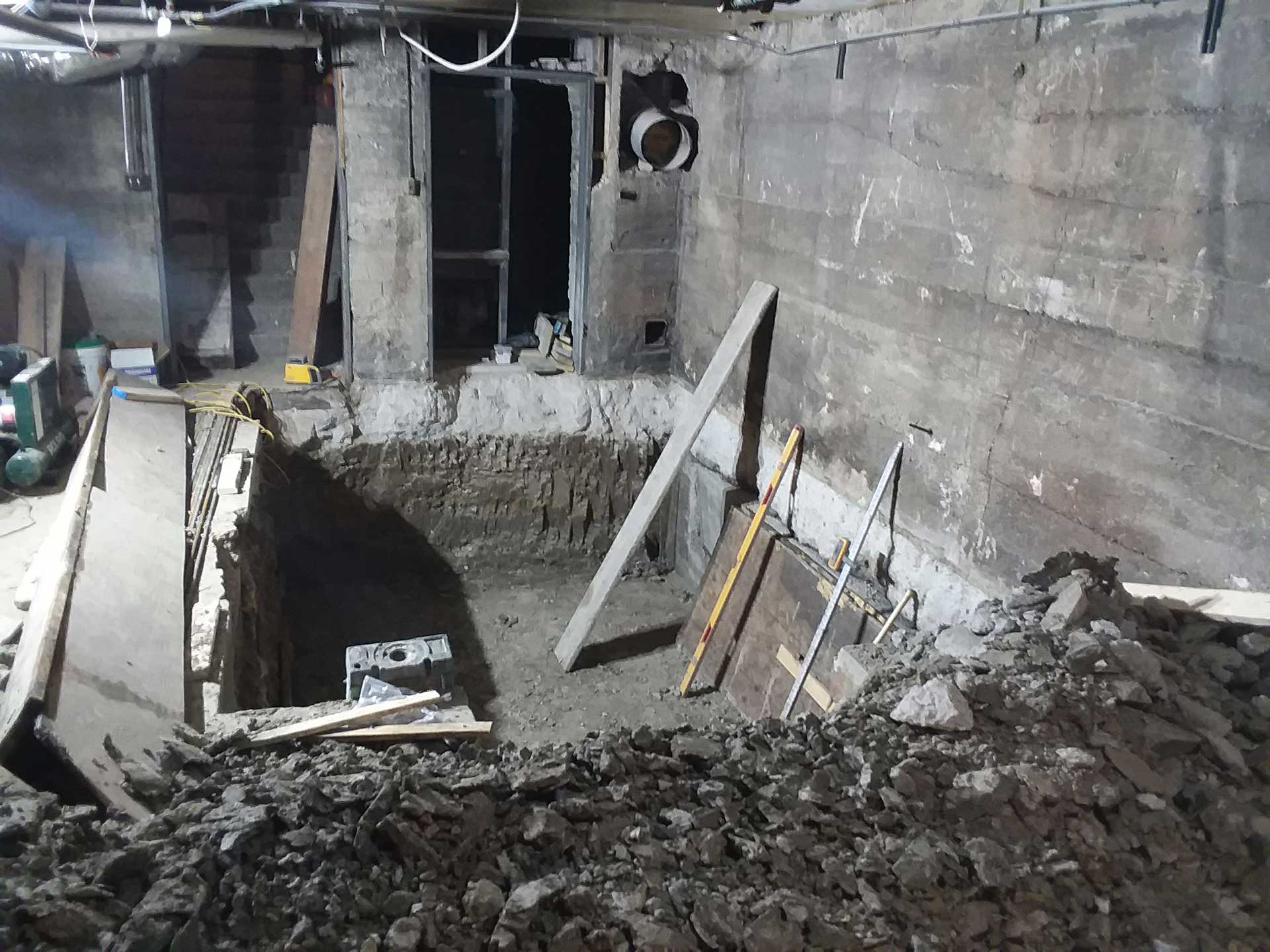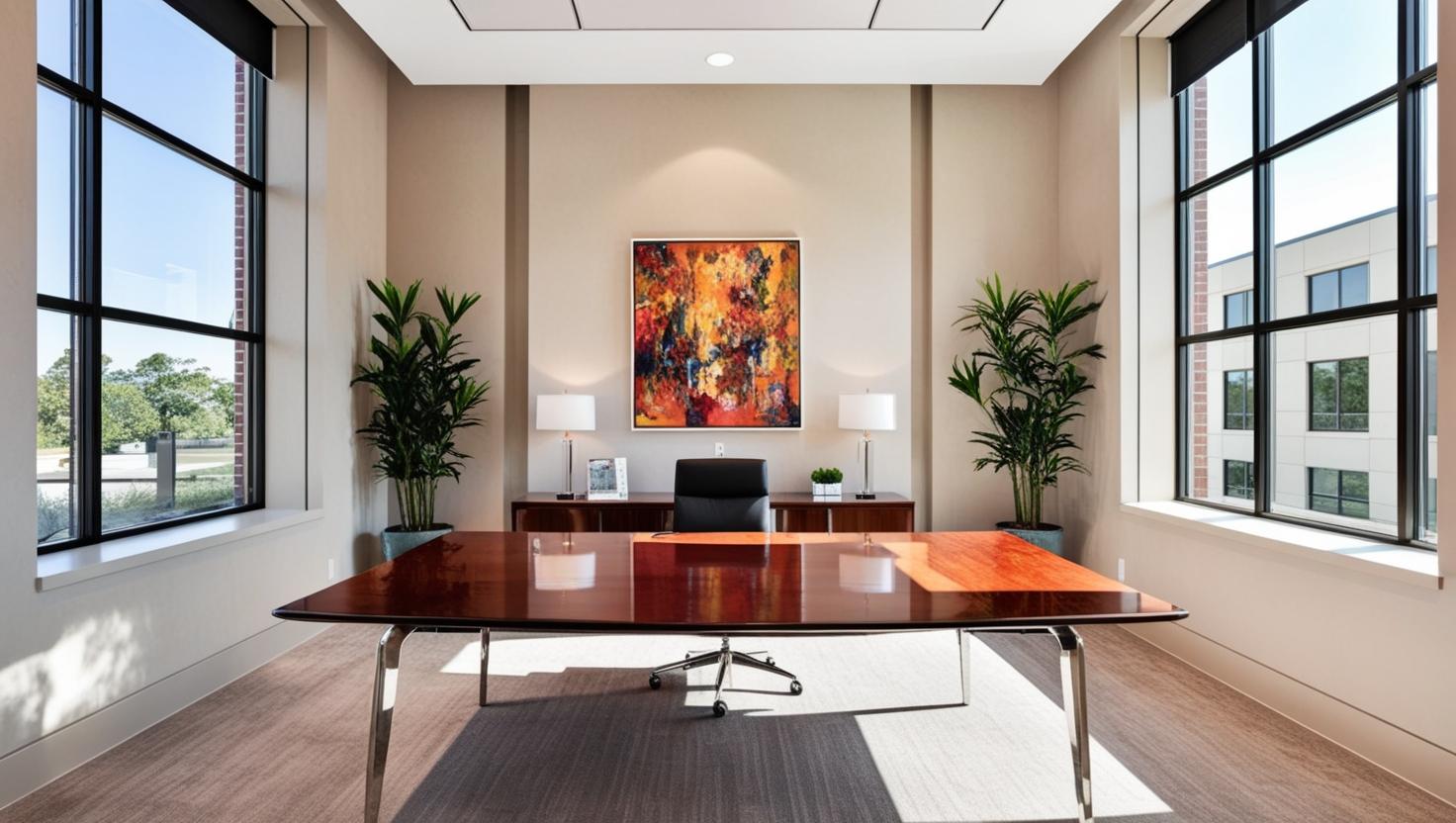
Preparing Your Business for Commercial Renovation
A Comprehensive Guide
Commercial renovations can breathe new life into your business, enhance your brand image, improve employee productivity, and even increase property value. However, they can also be significantly disruptive if not planned and executed properly! To minimize downtime, control costs, and ensure a smooth renovation process, thorough preparation is paramount. Here’s a comprehensive guide to help you prepare your business for a successful commercial renovation!
Define Your Goals and Scope
Why Renovate? Before embarking on any renovation project, it’s crucial to understand the driving force behind it. Pinpointing your main reason will guide every decision, from design choices to material selection, and ensure your renovation truly serves your business objectives.
- Enhance Brand Image: Create a more modern, inviting, or luxurious atmosphere that aligns with your brand identity.
- Improve Functionality: Optimize workflows, create more collaborative spaces, or better accommodate your business operations.
- Expand Capacity: Add more office space, retail square footage, or production areas to support growth.
- Boost Employee Productivity & Morale: Design a more comfortable, efficient, and inspiring work environment.
- Increase Customer Appeal: Create a more engaging and accessible experience for your clientele.
- Address Safety or Compliance Issues: Upgrade outdated infrastructure, ensure ADA compliance, or meet new building codes.
- Increase Property Value: Invest in improvements that will yield a higher return if you plan to sell or lease the property in the future.
Establish Scope: Once your “why” is clear, you need to precisely define the “what.” A detailed scope prevents unplanned additions and ensures accurate planning and budgeting. The more detailed your understanding of the project’s scope, the smoother the entire process will be.
- Essential Changes: What are the non-negotiable modifications? For example, moving a load-bearing wall, upgrading the HVAC system, or adding a new restroom.
- Desired Enhancements: What are the “nice-to-have” elements that would significantly improve your business? This could include new flooring, updated lighting, or a fresh paint scheme.
- Potential Future Changes: While not part of the immediate scope, thinking about future needs can help in designing flexible spaces.
- Phasing Opportunities: Can the renovation be broken down into smaller, manageable stages to minimize disruption?
Create a Realistic Budget
Renovations are an investment, and a well-structured budget is your financial roadmap. While labor, materials, and permits are obvious costs, it’s crucial to account for a wider range of expenses.
Direct Costs
- Demolition: Costs associated with tearing down existing structures
- Structural Work: Any modifications to the building’s core.
- MEP (Mechanical, Electrical, Plumbing): Upgrades or new installations for heating, ventilation, air conditioning, electrical systems, and plumbing.
- Finishes: Flooring, painting, wall coverings, ceiling treatments.
- Fixtures & Equipment: Lighting fixtures, plumbing fixtures, built-in cabinetry, specialized equipment.
- Permits & Fees: Costs for necessary local and state permits.
- Design & Architectural Fees: If you’re hiring an architect or interior designer.
- Project Management Fees: If you’re engaging a separate project manager.
Indirect Costs
- Contingency Fund: An extra 10-20% of your total budget, kept for unexpected costs. This acts as an insurance policy for unforeseen changes, material shortages, weather delays, or discoveries during demolition like unexpected asbestos.
- Temporary Relocation/Disruption Costs: If you need to operate from a temporary location, factor in rent, utilities, and moving expenses. If you remain open, consider potential loss of revenue due to disruption of services.
- IT & Technology Setup: Costs for moving or installing new network infrastructure, phone systems, etc.
- Furniture & Decor: New furniture, artwork, and decorative elements.
- Cleaning & Debris Removal: Post-construction cleaning services.
Set a Realistic Timeline

A well-defined timeline is crucial for minimizing disruption and ensuring a smooth renovation process.
- Consider Peak Seasons: If your business has peak seasons, try to schedule major construction during slower periods to minimize revenue loss.
- Collaborate with Your Contractor: Work closely with your chosen contractor to develop a detailed schedule that outlines each phase of the project, including demolition, framing, MEP rough-ins, finishes, and final inspections.
- Build in Flexibility: Acknowledge that delays are almost inevitable in construction. Weather, material delays, unforeseen structural issues, or permit holdups can all impact the schedule. Build in buffer time for these potential setbacks.
- Communicate the Schedule: Share the renovation timeline with your entire team and, importantly, with your customers. Transparency helps manage expectations and reduces frustration.
- Milestones and Checkpoints: Define key milestones throughout the project to track progress and identify potential delays early on.
Select the Right Contractor
Choosing the right commercial contractor is one of the most critical decisions you’ll make. They are your primary partner in bringing your vision to life and will be key to the success of your renovation.
Research and Interview Thoroughly
- Experience in Commercial Renovations: Look for contractors with a proven track record in projects similar to yours.
- Relevant Project Portfolios: Review their past work to assess the quality of their craftsmanship and their ability to handle projects of your scale and complexity.
- References and Reviews: Contact past clients to inquire about their experience with the contractor, focusing on communication, adherence to budget and schedule, and problem-solving skills. Check online reviews on reputable platforms.
- Licensing and Insurance: Verify that the contractor is properly licensed and carries adequate liability insurance.
Receive and Compare Detailed Proposals: Don’t just look at the bottom line. Scrutinize each proposal for:
- Scope of Work: Does it clearly outline all tasks and deliverables?
- Cost Breakdown: Is it transparent, detailing labor, materials, and subcontractors?
- Payment Schedule: Is it reasonable and tied to project milestones?
- Timeline: Does it align with your expectations and the contractor’s availability?
- Exclusions: What is not included in the proposal?
Establish Clear Communication: Before signing a contract, ensure you have a good rapport with the contractor and that they demonstrate a commitment to clear and regular communication. Discuss preferred methods of communication (email, phone, in-person meetings) and expected response times. A strong communication plan is paramount for a successful partnership.
Develop a Detailed Plan

Once your contractor is on board, collaborate to flesh out the operational details. During the planning stage, you should be sure that your vision and the contractor’s abilities align seamlessly.
Construction Schedule: Work together to refine the detailed construction schedule, outlining specific tasks, responsible parties, and deadlines for each phase.
Phasing Plan: If necessary, develop a phasing plan to minimize disruption. This might involve renovating one section of your business at a time, allowing you to continue operations in other areas.
Relocation Considerations: If your business cannot operate during certain phases of the renovation, plan for temporary workspaces or a complete relocation. This includes finding a suitable temporary location, moving logistics, and setting up essential services.
Impact on Employees and Customers:
- Internal Communication: Clearly and consistently communicate the renovation plans, schedule, and potential disruptions to your employees. Involve them in discussions where appropriate to gather their input and address concerns.
- Customer Communication: Inform your customers well in advance about the renovation, including any temporary closures, revised hours, or changes to access. Use multiple channels: website announcements, social media, in-store signage, and email newsletters. Highlight the benefits of the renovation for them.
Prepare Your Space
Physical preparation of your business space is crucial for efficiency and safety. Speak with your contractor to know how you should prep your space for them specifically. Below are a few general-practice basics for preparing your space.
- Clear the Renovation Area: Remove all furniture, equipment, inventory, and personal belongings from the designated renovation zone.
- Protect Sensitive Equipment and Areas: Cover any equipment that cannot be moved with heavy-duty plastic sheeting to protect it from dust, debris, and potential damage.
- Designate Safe Access Paths: Work with your contractor to establish clear, safe, and easily accessible pathways for their crew, materials, and equipment. This minimizes disruption to your operational areas and ensures safety for both your team and the construction crew.
- Temporary Storage: Arrange for secure temporary storage for items removed from the renovation area. This could be off-site storage or a designated secure area within your premises.
- Utility Shutdowns: Coordinate with your contractor regarding any necessary utility shutdowns (water, electricity, gas) and communicate these to your employees and customers if they impact operations.
Post-Renovation Considerations

The renovation isn’t truly complete until the final details are handled!
- Final Walkthrough: Schedule a comprehensive final walkthrough with your contractor and your internal point of contact. Inspect every aspect of the renovated space to ensure all work is completed to your satisfaction, meets the agreed-upon specifications, and addresses any lingering issues. Document any deficiencies or punch-list items for the contractor to address.
- Construction Clean: Arrange for a thorough post-construction cleaning service to remove all dust, debris, and construction residue, leaving your space sparkling and ready for use.
- Update Insurance Policies: Contact your insurance provider to update your commercial property insurance policies to reflect any changes to the building’s value, features, or square footage.
- Announce Completion and Re-Opening: Make a grand announcement to your customers and employees about the completed renovation. Highlight the new features and improvements. Consider a re-opening event or special promotions to celebrate.
- Gather Feedback: After the renovation, gather feedback from your team and customers on the new space. This valuable input can help identify any areas for further improvement or inform future projects.
By meticulously following these steps, you can significantly minimize the disruption caused by a commercial renovation and ensure a successful outcome. A well-planned and executed renovation is not just about changing a space; it’s an investment that can dramatically improve your business’s efficiency, aesthetics, brand perception, and overall success.
Want To Know More?
Transforming spaces is what we do! Whether it’s through construction, renovation, or repurposing, our skilled team at DBCC has the knowledge to help you today. For more information about what we do and how we transform commercial businesses, read about how we do Property Repurposing and Property Renovation or send an email on our Contact page! Have any other questions? Some of our most frequently asked questions are answered in our FAQ. We look forward to working with you and your business and can’t wait to hear from you!

Author: Chad Peda
Date: June 1, 2025
Address
International Market Square
275 Market Street, Suite 197
Minneapolis, MN 55405
Phone
(763) 393-6405
STAY CONNECTED
We share a unique project / case study quarterly, and other interesting things from time to time. We promise you no worthless spam. 🙂
Committed to our Clients
“While working with Chad at DBCC our office renovation was smooth and seamless. Before I knew it, we were up and running, while I stayed focused on our needs without worry or concern. I highly recommend their services.”
-David Knudson, CEO
Home Inspectors of America

a Design Pro Brands company – MN Cont. Reg#: IR 809252